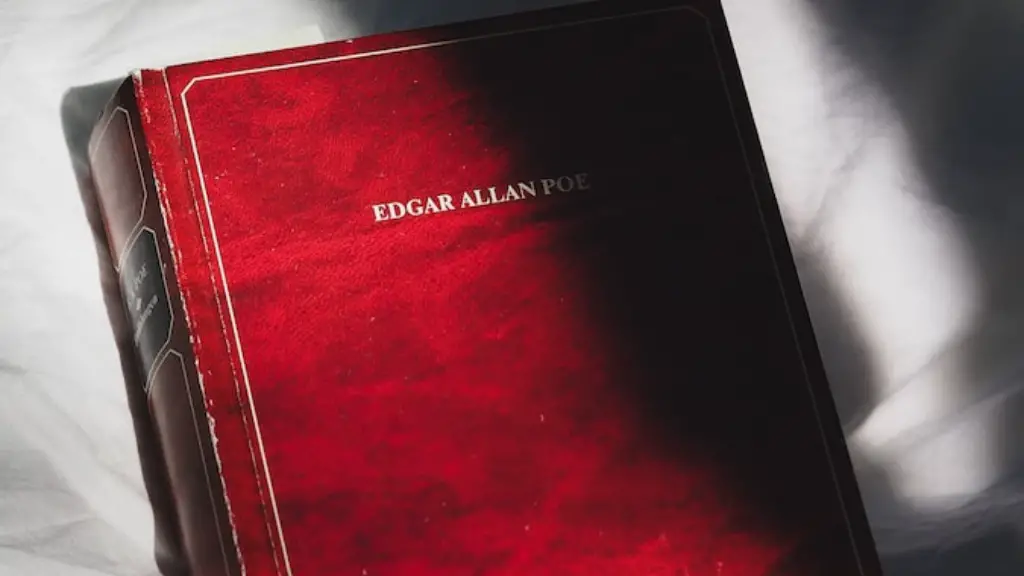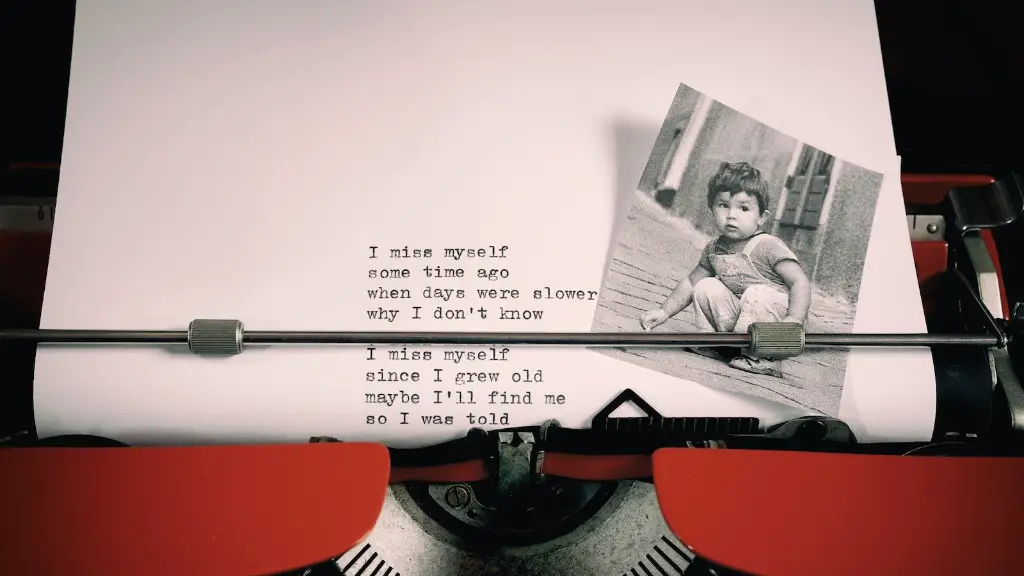How to Identify Theme in Poetry
Maximising the impact of language, emotion and sound, the art of poetry has captivated the hearts of readers for centuries. Though its beauty lies in its simplicity, understanding the underlying message in poetry can be challenging. Understanding the theme of a poem is an essential skill for analysing its content and expressions, so as to be able to appreciate the author’s greater message. Understanding how to identify the theme of a poem requires an understanding of its central idea, the use of literary tools and one’s own perceptiveness.
Most forms of poetry are written to evoke an emotional response from readers. For example, the 16th century poet, William Shakespeare, wrote from vast experiences of life, spanning from love and hate to joy and sorrow. Over time, poems have been used to provoke thought, challenge one’s moral values and even to provide escape. To do this, poets employ narrative and descriptive techniques.
For example, Thomas Gray’s poem, ‘Elegy Written in a Country Churchyard’, paints images of death, grief and bleakness. To ensure that readers appreciate his message, he writes in the universal language of symbols, connotations and allusions. By carefully selecting these words and phrases, the poet is able to evoke an emotional response from readers. To identify the theme of the poem, it is important to trace the poem’s leitmotif, or main idea, and determine how it serves to link the poem’s many elements.
The most important element to consider when identifying the theme of a poem is the narrative. Loosely defined, narrative is the means by which the poet tells a story and conveys meaning. In the poem, ‘The Rime of the Ancient Mariner’, by Samuel Taylor Coleridge, the poet tells the story of a mariner’s voyage through life. Through the narrative, the poet describes the mariner’s quest to find meaning and purpose in life, symbolised through the imagery of the sea. By mapping out the poet’s intended journey, readers are better able to decipher the poem’s meaning and determine the poem’s greater idea.
In some cases, the poet may use symbols or connotations to help convey their message. Symbols can be seen as objects or ideas that have been used to evoke a certain emotion in readers. In the poem, ‘The Road Not Taken’, by Robert Frost, the imagery of the ‘two roads diverging’ serves as not just a physical journey, but an exploration of life’s many possibilities. In this way, the reader is able to gain an insight into the poet’s own inner struggles and emotions. By understanding how symbols are used to convey meaning, readers are better able to identify the main theme of the poem.
Finally, personal perceptiveness is an invaluable tool when trying to identify the main theme of a poem. By paying careful attention to how the poet frames his ideas in the poem, the reader can gain insight into the poet’s thoughts and emotions. By showing empathy and considering how the poem’s words make them feel, readers can gain a better understanding of the poem’s greater meaning. Ultimately, each reader is unique, so it is important to consider one’s own view and appreciate the poem in their own way.
In summary, identifying the theme of a poem is a complex process that requires an understanding of its narrative, the use of symbols and one’s own perceptiveness. Combined, these three elements can help readers to appreciate a poem’s greater meaning and identify its main idea.
Determining the Structure
When analyzing a poem, the structure is often the most important element to consider. Structure is the way in which a poet arranges the poem on the page, and it can have a profound impact on how the poem is read and interpreted. In general, poems are structured into three parts: a beginning, a middle and an end. This structure can help readers to identify the overall message of the poem as they progress through it.
The beginning of most poems sets the tone and provides the reader with an introduction to the poem’s subject. This can be done through the use of imagery, tone, and the introduction of the poem’s theme. The middle of the poem usually serves to further develop the poem’s central idea, through the use of metaphor and other literary techniques. Finally, the end of the poem is often used to tie the poem together and provide readers with a satisfactory conclusion to their reading experience.
By understanding the structure of a poem, readers are more easily able to identify the overall theme of the poem. By looking for textual clues such as word choice, syntax, and imagery, readers can piece together the poem’s narrative and detect its main idea. Recognising the poem’s structure is an essential skill in accurately interpreting a poem’s message.
Understanding Tone
In order to identify the theme of a poem, it is important to consider the poem’s tone. Tone refers to the attitude or feeling the poet conveys through the poem. Through tone, the poet can evoke an emotional response in the reader, and thus further convey the poem’s meaning. For example, in Christina Rossetti’s poem, ‘Remember’, the poet presents an image of beauty and sadness that reflects the bittersweet nature of love and loss.
The tone of a poem can be determined through careful analysis of the poem’s language, sentiment, atmosphere and imagery. By looking at how the poet has constructed the poem, the reader can decipher the poet’s attitude towards the poem’s subject. Once the reader understands the poem’s tone, they can deduce the poem’s message and meaning, and thus the poem’s theme.
The Use of Imagery
In order to truly understand a poem, it is important to consider its use of imagery. Imagery is the use of vivid descriptors both to convey a deeper understanding of the poem’s theme, and evoke an emotional response from the reader. Many poems are built off of using imagery to reveal a deeper truth about the poem’s message. For example, in Stevie Smith’s poem, ‘Not Waving But Drowning’, the reader is presented with powerful imagery of the sea to represent a metaphor for death.
By carefully analysing the poem’s imagery, readers can discover new perspectives and gain insight into the poem’s message. By mapping out the poem’s symbols and allusions, readers are better equipped to identify the poem’s greater idea, and exploit the poet’s intention. In this way, imagery is an invaluable tool in deciphering the complexity behind a poem’s underlying message.
Interpreting Metaphor
Metaphors are often used in poetry to create vivid descriptions and encourage readers to think expansively. By comparing two things in order to draw a comparison between them, metaphors can give readers greater insight into a poem’s purpose and message. For example, in Alfred, Lord Tennyson’s poem, ‘Ulysses’, the reader is presented with a metaphor of an eagle and a storm to represent the struggle between old age and death.
By uncovering the poem’s metaphorical language, readers gain deeper understanding of the poem’s theme. This can help readers to interpret the poet’s inner-worries, attitudes and values. By doing so, readers can identify the poem’s broader message and learn greater insights into the poem and its narrative.
Pay Attention To Rhyme
Rhyme is a powerful tool that poets use to draw readers into the narrative of their poem and amplify the poem’s larger points and ideas. Rhyme is often used to emphasise words and ideas, and by employing it, poets are able to evoke emotions in readers. For example, in Emily Dickinson’s poem, ‘Hope Is The Thing With Feathers’, the poet carefully rhymes each word in the poem’s first stanza, to reinforce her message and create an atmosphere of hope and optimism.
By carefully analysing the poem’s use of rhyme, readers can identify the underlying message of the poem, and uncover the poet’s underlying meaning. By doing so, readers can gain an understanding of the poem’s underlying theme, and identify the poet’s purpose in writing it. Thus, rhyme is a valuable tool in helping readers to decipher a poem’s deeper meaning.
Understanding Word Choice
Word choice can be a powerful tool for conveying a poem’s message and themes. Poets often choose precise words with intricate connotations that can help the reader better understand the poem’s greater message. For example, in William Wordsworth’s poem, ‘I Wandered Lonely As A Cloud’, the poet very deliberately uses the phrase ‘dancing daffodils’ to evoke an image of joy and freedom, and to hint at an underlying message about the beauty of nature.
By understanding how poets use word choice to paint vivid imagery in their poems, readers can unearth a poem’s hidden meanings. By exploring the poem’s connotations and nuances, readers can gain a better understanding of its themes and come to appreciate the poet’s message. Thus, understanding the words in the poem is an essential tool in deciphering its greater idea.





